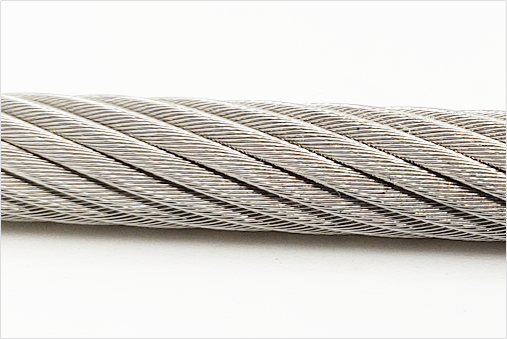

Stainless Steel
In the mechanical cable industry, stainless steel has long been favored for its unique combination of strength, corrosion resistance, and ductility. These attributes make it an ideal choice for various applications, as evidenced by its widespread use in industries ranging from aerospace to healthcare.
The Composition and Alloys of Stainless Steel Mechanical Cable
The core strength and corrosion resistance of stainless steel cable is derived from the material's unique combination of iron, chromium, nickel, and other elements. The specific alloy used can significantly impact the cable's performance characteristics. For example, 304 stainless steel is known for its excellent corrosion resistance and mechanical properties, while 316 stainless steel offers increased resistance to corrosion in highly corrosive environments, such as those involving exposure to seawater or chemical substances.
To produce high-quality stainless steel mechanical cable, manufacturers like Carl Stahl Sava Industries employ a variety of techniques, including:
Manufacturing Techniques for Stainless Steel Mechanical Cable
Wire Drawing: The process begins with wire drawing, where a stainless steel rod is reduced in diameter by pulling it through a series of dies. This process not only refines the material's microstructure but also improves its mechanical properties. While Sava does not draw its own wire, our network of wire drawing suppliers comprise the best wire makers in the world.
Stranding: Once the wire is drawn to the desired diameter, it is then stranded to form a cable. At Sava, cable is stranded helically, which involves winding individual wires around a central core, where multiple wires are intertwined to create a flexible yet strong structure, depending upon cable construction and wire count.
Coating: Stainless steel cables produced by Sava may be coated with a material such as vinyl, nylon, or FEP. The coating enhances the cable's durability and resistance to environmental factors, such as seawater, or other potentially harmful particulates. Coated cable is also especially useful in applications where the cable is exposed to wear and abrasion.
Inspection and Testing: Throughout the manufacturing process, Sava's quality team rigorously performs quality control measures to ensure that the final product meets or exceeds the required specifications. This may involve tensile strength testing, fatigue and cycle testing, as well as visual inspection to identify any defects or irregularities in the cable's construction.
Sava's Stainless Steel Cable Constructions
Sava offers a comprehensive line of stainless steel mechanical cable constructions. Be sure to check out our over-the-counter cable offerings as well.


1X7
7 wires, is stiff and common in endoscopic devices and surgical instrumentation.


1X19
19 wires, is stiff and also common in endoscopic devices and surgical instrumentation.


7X7
49 wires, is flexible and common in industrial applications and flexibility of limited concern.


7X19
133 wires, is flexible and common in pulley applications, change of direct and cycling. Counterbalancing.


19X7
133 wires, anti-rotational, is flexible and common in semiconductor growth and hoist mitigation.

